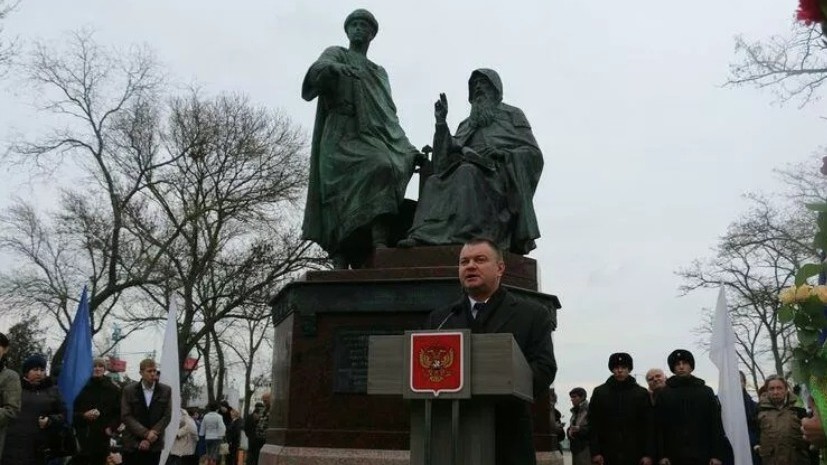According to RIA Novosti, the composition is a sculpture of the old Russian prince Gleb Svyatoslavich and chronicler Abbot Nikon with a copy of the Tmutarakan stone.
“We are witnesses to a landmark and deeply symbolic event, which will be a vivid confirmation of the cultural phenomenon of Crimea as one of the centers of world civilization, as well as proof that Kerch is the oldest city in Russia,” said the head of the Ministry of Culture of Crimea Arina Novoselskaya.
She noted that this is a monument "not just a political figure in ancient Russia, but a material image of the unity and indivisibility of Crimea and Russia."
She said that the Tmutarakan stone found in Taman in 1792 stated that Prince Gleb measured the sea between Tmutarakan (a medieval city located in the Kuban river delta on the territory of the present village of Taman in the Krasnodar Territory) and Korchev (Kerch) in 1068.
Novoselskaya explained that “the measurement of the strait is a symbolic action denoting firm Russian rule on both banks,” and, as she said, “it is symbolic that the measurement was taken along the same route where the Crimean bridge was erected, forever linking these banks to one and indivisible whole. "
Earlier, the arched section of the Crimean bridge was highlighted with the colors of the Russian flag with the help of lamps with white, blue and red LEDs.
Crimea became the Russian region after a referendum held there in March 2014, in which most residents spoke out for reunification with Russia.

